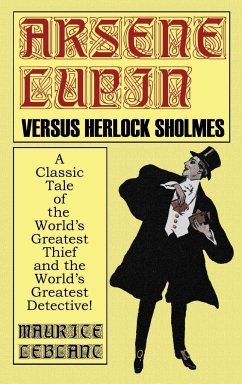Arsène Lupin vs Herlock Sholmes (1910) is a novel by Maurice Leblanc. Forced to change the name of his antagonist following a legal challenge by Holmes' creator, Leblanc still manages to pull off one of the greatest fictional mashups of all time. Partly based on the life of French anarchist Marius Jacob, Arsène Lupin first appeared in print in 1905 as an answer to Sir Arthur Conan Doyle's Sherlock Holmes. Blending crime fiction, fantasy, and mystery, Leblanc crafts original and entertaining tales of adventure starring one of the greatest literary characters of all time-Arsène Lupin, gentleman thief. Arsène Lupin is the world's greatest thief, an unmatched force for good whose exploits threaten the wealth and standing of France's most wicked men. In this installment of Leblanc's beloved series, Lupin uses his remarkable wit and chameleon-like ability to move undetected through aristocratic society in order to steal, trick, and cheat his way through life. Despite his criminal nature, he operates under a strict moral code, only taking from those who have taken from the poor all their lives. In this novel, Lupin forces French authorities to bring in an investigator capable of put a stop to his escapades. Across the English Channel comes Herlock Sholmes, the legendary British detective, and his trusted assistant Wilson. Although they are of a different breed than their adversary, who remains focused and stoic throughout, Sholmes and Wilson, despite their humorous outlook, prove more than capable of catching the gentleman thief. Arsène Lupin vs Herlock Sholmes is a story of romance, mystery, and crime that continues to astound over a century after it was published. This edition of Maurice Leblanc's Arsène Lupin vs Herlock Sholmes is a classic of French literature reimagined for modern readers. Since our inception in 2020, Mint Editions has kept sustainability and innovation at the forefront of our mission. Each and every Mint Edition title gets a fresh, professionally typeset manuscript and a dazzling new cover, all while maintaining the integrity of the original book. With thousands of titles in our collection, we aim to spotlight diverse public domain works to help them find modern audiences. Mint Editions celebrates a breadth of literary works, curated from both canonical and overlooked classics from writers around the globe.
Hinweis: Dieser Artikel kann nur an eine deutsche Lieferadresse ausgeliefert werden.
Hinweis: Dieser Artikel kann nur an eine deutsche Lieferadresse ausgeliefert werden.








